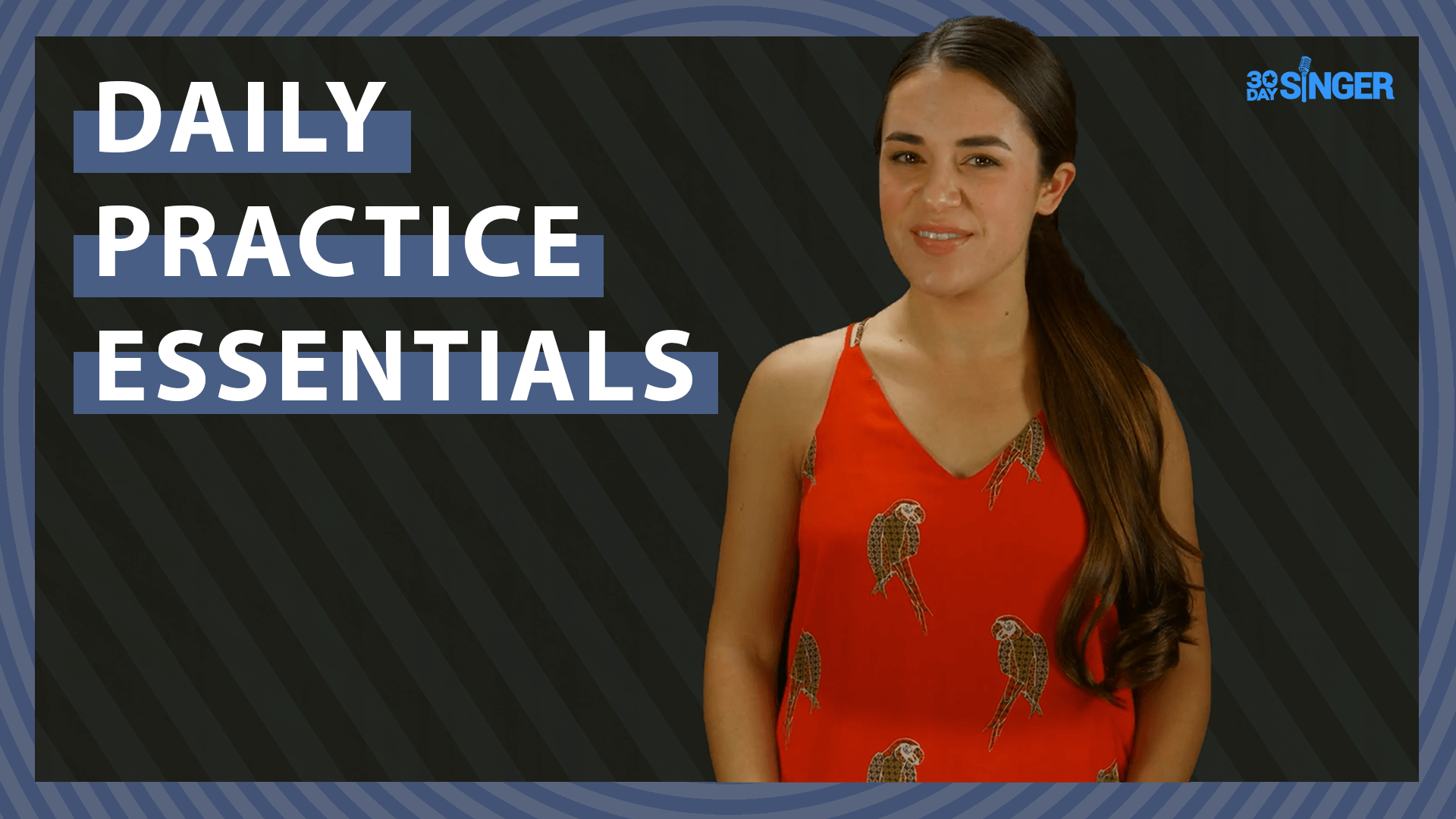One Lesson Per Day? How to practice for the Best Results
May 21, 2020If you’re new to our site, welcome! We’re so glad you’re here and we’re excited for you to learn with us.
Many new students ask: how many lessons am I supposed to complete per day? What if I want to watch more than one lesson? How much time should I spend practicing? What should my practice routine look like?
We’ve got answers to all of those questions to set you up for success!
How many lessons should I complete per day?
The 30-day beginner courses were designed with 1 lesson per day in mind. Why just one lesson? Because each lesson introduces a new concept or skill, and we want to allow enough time for you to practice that new skill before moving on to the next lesson. In reality, the 30-day course could be completed over a longer period, especially if you want more time to become really comfortable with each skill before progressing to the next.
At the end of the course, you will have learned all about your voice and you’ll have the tools to continue growing your skills.
Why do you recommend warming up before completing a lesson?
Warming up prepares your voice to sing. And when your voice is prepared - with blood flow to those muscles, vocal folds lined up properly and gently stretched out - you’ll have an easier time practicing the skills and new exercises within the lesson!
While some tutorials have warmups built in, most lessons within the beginner courses (as well as some tutorials) do not.
What’s the difference between a warmup and a vocal exercise?
We use those terms interchangeably! Any vocalization can be used to both “warm up” and “exercise” your voice. If you want to get technical, you’re “warming up” your voice if you haven’t done much speaking that day. If you’re singing later in the day, and you’ve already been speaking a lot, your voice is technically “warm”, but it hasn’t been prepared to sing.
Our main goals with any warmup are: balancing your vocal folds so they come together properly, gradually stretching out the vocal folds, and navigating between your different vocal registers. We like to save more challenging exercises, like those with long sustained notes or belting, for the end of our warmup/exercise routine.
 Learn about some of the easiest practice exercises you can do everyday.
Learn about some of the easiest practice exercises you can do everyday.
What should my daily routine look like?
Most importantly: get into the habit of exercising your voice every day. A complete warmup/exercise routine can be about 10-15 minutes and should start with easy, gentle exercises like lip trills, humming, or singing on an NG. You want to gradually open up to syllables that start with a consonant (like MUH or NO), and end by singing on open vowels. It’s okay if you don’t always follow this format, but your warmup (and singing in general) will be easier if you start with gentle, closed exercises (including lip trills, MM, NN, singing through a straw, etc). You can find a variety of warm-up routines on our warm-up page! Day 2 of the 30-day beginner course also contains a complete, gentle warmup you can use daily.
Once you’re warmed up, you can follow along with a new lesson video. If you want more practice on that specific skill, feel free to repeat the exercises within that video.
If you have more time and want to keep practicing, here are a few ideas:
• Active listening + analysis: listen to your favorite singers to analyze their style and technique. Look for live performances (no lip syncing!) and take note of their posture, mouth shape, vowels, etc.
• Listen to music from different genres: there’s something to learn (and hopefully something to like) in every style of music! It can be especially instructive to listen to the artists your favorite singers have cited as their influences and see if you can hear similarities.
• Train your ears: to start out, use a virtual keyboard to get a reference pitch and try to match that pitch. See how close you get with a chromatic tuner. We like https://www.harpkit.com/online-tuner and https://tuner.ninja/.
• Consider using an app like SingSharp (android + iPhone), PerfectPitch (iPhone only), or a karaoke app like Smule (android + iPhone), to analyze your pitch accuracy as you sing a song.
For beginners especially: pay attention to how your voice feels! If you’re experiencing vocal fatigue, cut back on your vocal use and incorporate more listening into your routine as you build stamina. And if you’re ever experiencing a sore throat, please rest your voice! Return to singing when you feel healthy.
We hope this has helped provide some guidance as you begin training your voice! If you have specific questions as you go, please head to our forum and an instructor will respond to you.

